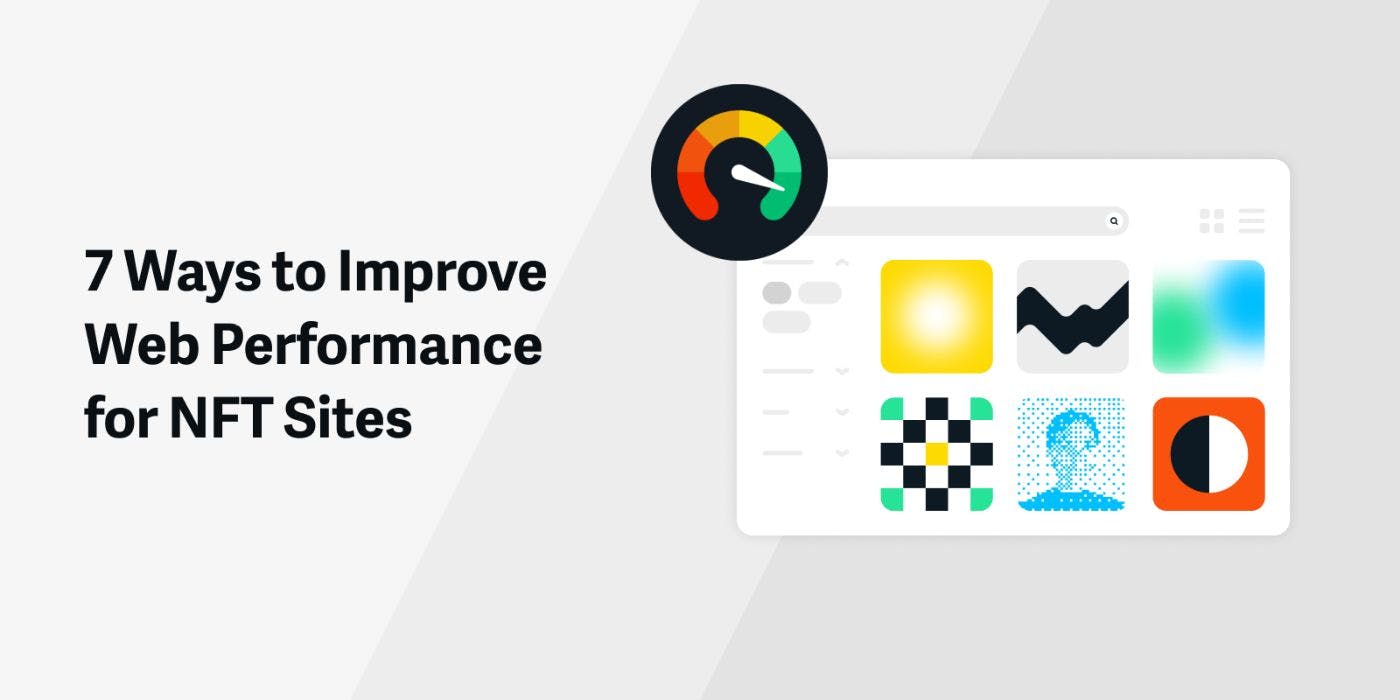NFTs are at the top of everyone’s minds these days. Despite
Global tech research and advisory company
With the NFT universe growing, so too has the development of the NFT marketplace. Due to the extremely high-value nature of the transactions conducted on these marketplaces (last year alone,
The Need for Speed, Discoverability, and Safety
If you are building an NFT marketplace, you will likely face challenges similar to other visual media-heavy websites like
-
Page speed and user experience - Users increasingly demand a fast web or app experience in all online marketplaces.
Nearly 70% of consumers admit that page speed impacts their willingness to buy from an online platform. Delivering an optimized andresponsive visual experience dramatically impacts your audience's chance of making a trade and their willingness to continue using the platform and refer others. -
SEO and discoverability - The speed of your page performance impacts engagement rates and heavily influences your search ranking and traffic. With the release of its
Core Web Vitals (CWV) report , Google is making it clear that its powerful search algorithm is heavily weighted toward the speed with which elements load or how long it takes for a browser to turn a page click into action. -
Credibility and trustworthiness - Like many platforms with a large volume of user-generated content, NFT marketplaces face the challenge of content safety and copyright infringement. It's vital to have content moderation. If your site is caught with content that violates the guidelines, it can damage the trust of both buyers and sellers; not a great thing to do, especially when dealing with the NFT world.
Competition is intensifying; with so much growth and evolution in the space, it’s crucial to find a scalable solution that sets you up for success now and in the future. The good news is that visual media processing is the solution.
7 Ways to Improve NFT Marketplace Performance
-
Image Compression - With proper compression, you can reduce the size of your image files without losing perceptible visual quality. This will help images on your website or app load faster.
-
Image Resizing - Images are often served much larger than needed for a page, which adds to the page weight and slows down page loading. By resizing your images appropriately, you deliver the optimal dimensions without loading extra bytes of data.
-
Image Format Conversion - You can further reduce page weight and load time by converting existing image files to AVIF or WebP. AVIF and WebP are next-gen image formats developed by Netflix and Google, respectively. imgix customers have seen file size reduction by an average of
60% from JPEG to AVIF , with virtually no loss in quality. -
Converting Animated GIFs to Videos - Many NFTs are created as animated GIFs. However, with the same animated content, a GIF is much larger and loads slower than MP4 or WebM. You can set MP4 and WebM videos to autoplay and loop like GIFs. By converting an animated GIF to MP4 or WebM, you get the benefit of compression without sacrificing user experience.
-
Responsive Design - For the best user experience, your website and all its elements should dynamically adjust based on the browser and device. For responsive imagery, resolution switching and art direction adjustments are two main tactics.
-
Asset Management and Content Moderation - Being able to search, visualize, and organize your NFTs in one central source of truth can help you significantly improve content moderation. If your asset management system provides content alerts, it will enhance your ability to ensure content safety and build user trust.
-
Use a Fast and Reliable CDN Built for Images and Videos - The last mile, both figuratively and literally, is content delivery. By using a globally distributed CDN with intelligent caching and visual media processing, you are significantly more likely to provide visitors with a fast and reliable experience.
The Results
https://www.youtube.com/watch?v=qyskprwH248&embedable=true
The good news is, implementing all seven recommendations can be done. In fact, doing so increased the pagespeed score from 68 to 100 points when we created a sample NFT gallery leveraging those techniques. Of course, building and maintaining an NFT marketplace comes with many challenges. Fortunately, understanding how to optimize your marketplace and combining it with the right technology means that your marketplace will be set up for success as the digital marketplace world continues to evolve.


